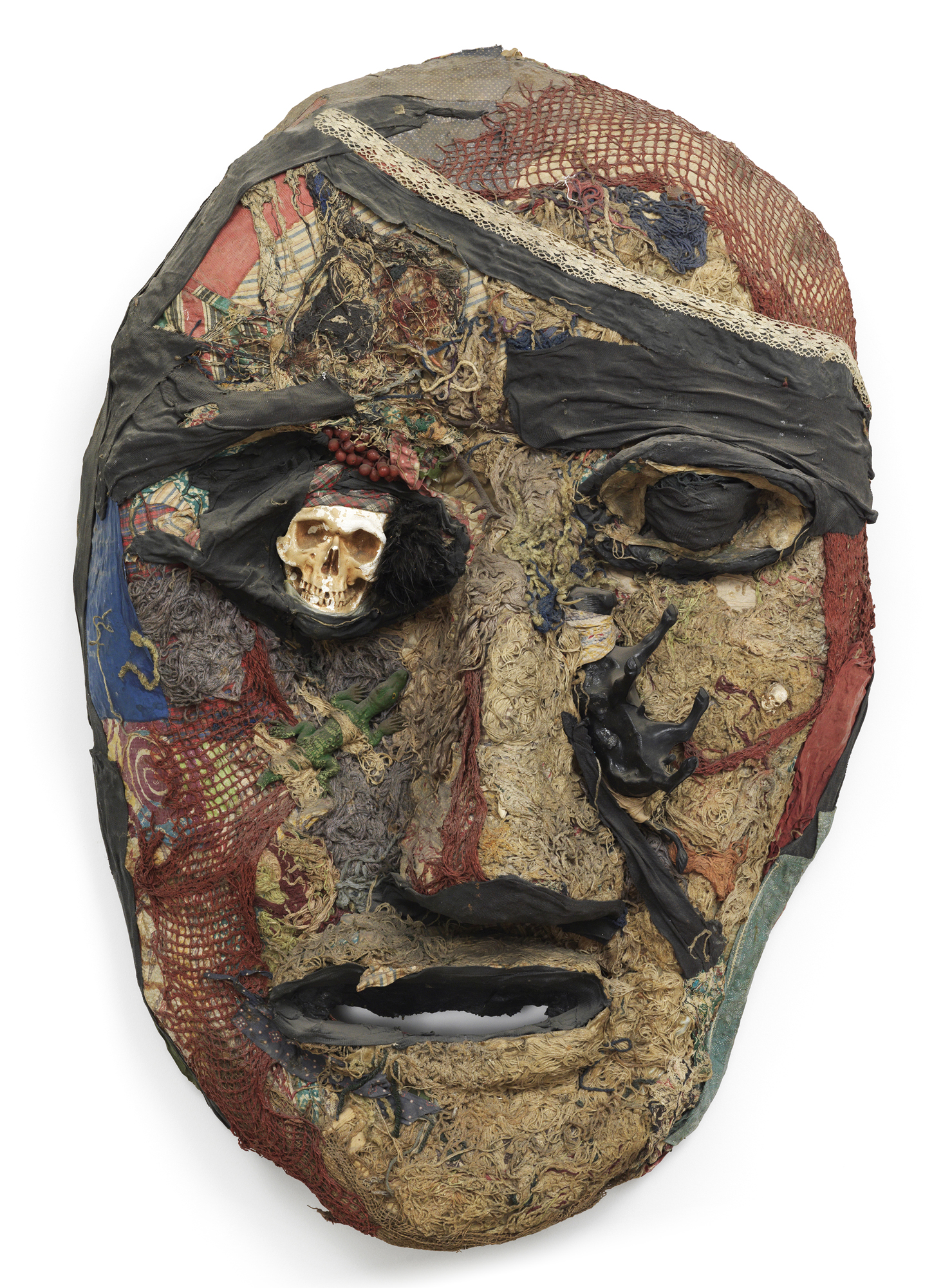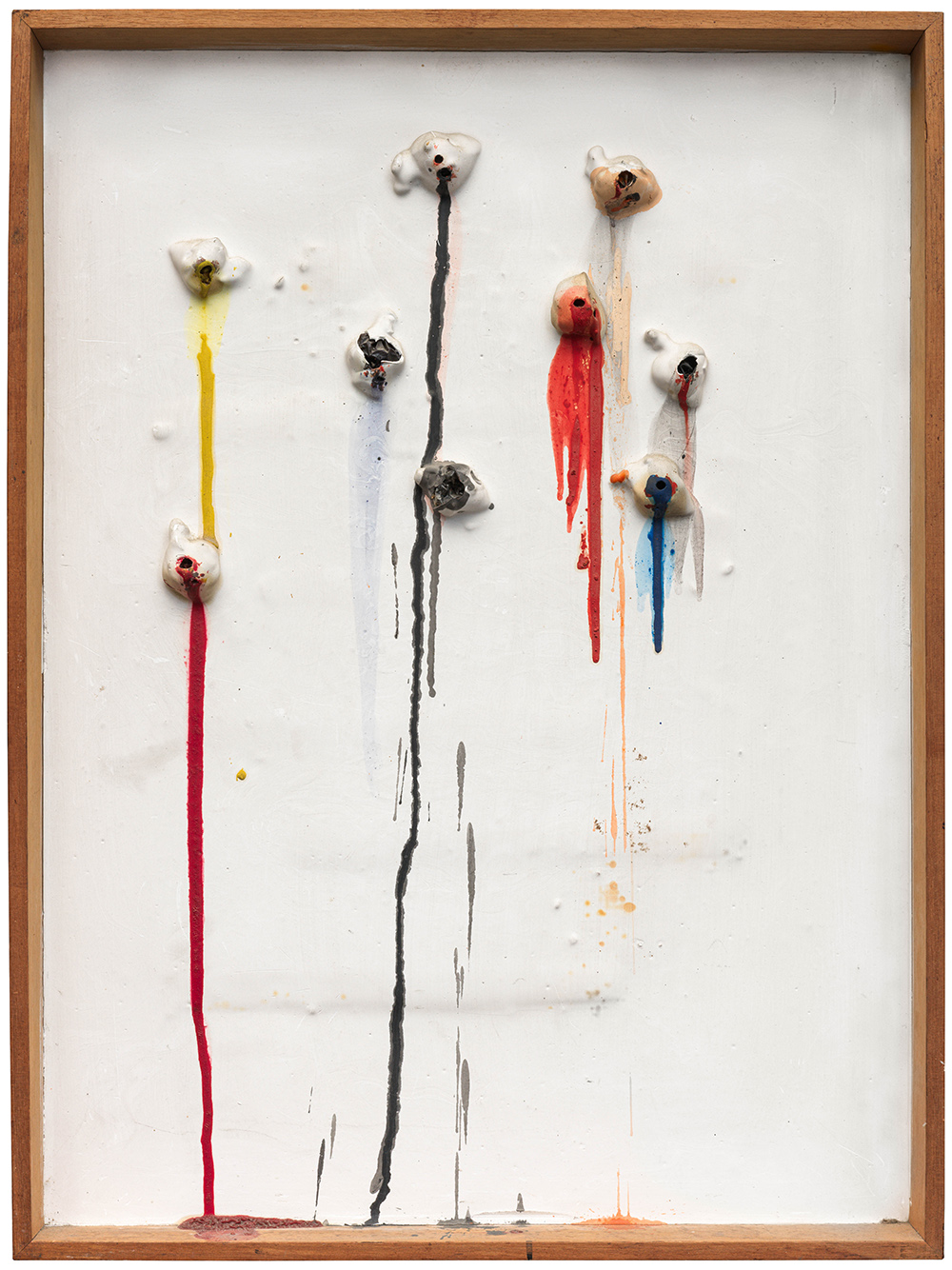Niki de Saint Phalle (derived from her real name, Catherine Marie-Agnès Fal de Saint Phalle) did not like to define herself as an “artist”, but rather as a “director of dreams”. By means of her paintings, sculptures and films, Saint Phalle sought to implement a singular artistic dream, that of giving voice to another type of femininity, different from that promoted by social norms.
Born to an aristocratic French family that lost its fortune following the 1929 stock market crash, Niki de Saint Phalle spent the first three years of her life in France at the home of her paternal grandparents. As a “feminist at the age of twelve”, she rebelled against prescribed roles and got expelled from the religious school she attended in New York. After an adolescence troubled by family tensions and an abusive father, Saint Phalle worked as a model and married American writer Harry Mathews in 1950.
A few years after the birth of her first child, she was sectioned at a clinic in Nice for depression. There, feeling the need to create again, she started collecting twigs, pebbles, grass and other objects, which she used to create her first “collages”. Her penchant for assemblage was to return in her subsequent practice.
Out of her copious, versatile body of work, it was her Tirs series in the 1960s that established her notoriety. After having left her husband, she dedicated herself completely to her artistic practice, and with the support of Jean Tinguely (whom she later married), she joined the Nouveaux Réalistes group, becoming its only female member.
Gradually, Saint Phalle’s artistic world came to be expressed solely in the feminine. Her Mariées and her Nanas revealed monumentally sized female warriors that seized the world playfully, manifesting “a certain desire to crush the male sex in this society that he dominates”.
For Saint Phalle, the world was henceforth round, curved, undulating: “the world is a breast”. Without adopting a militant discourse like that of American feminists, Saint Phalle’s work reveals her desire to express herself deeply, while questioning the condition of women in today’s world
Born to an aristocratic French family that lost its fortune following the 1929 stock market crash, Niki de Saint Phalle spent the first three years of her life in France at the home of her paternal grandparents. As a “feminist at the age of twelve”, she rebelled against prescribed roles and got expelled from the religious school she attended in New York. After an adolescence troubled by family tensions and an abusive father, Saint Phalle worked as a model and married American writer Harry Mathews in 1950.
A few years after the birth of her first child, she was sectioned at a clinic in Nice for depression. There, feeling the need to create again, she started collecting twigs, pebbles, grass and other objects, which she used to create her first “collages”. Her penchant for assemblage was to return in her subsequent practice.
Out of her copious, versatile body of work, it was her Tirs series in the 1960s that established her notoriety. After having left her husband, she dedicated herself completely to her artistic practice, and with the support of Jean Tinguely (whom she later married), she joined the Nouveaux Réalistes group, becoming its only female member.
Gradually, Saint Phalle’s artistic world came to be expressed solely in the feminine. Her Mariées and her Nanas revealed monumentally sized female warriors that seized the world playfully, manifesting “a certain desire to crush the male sex in this society that he dominates”.
For Saint Phalle, the world was henceforth round, curved, undulating: “the world is a breast”. Without adopting a militant discourse like that of American feminists, Saint Phalle’s work reveals her desire to express herself deeply, while questioning the condition of women in today’s world

